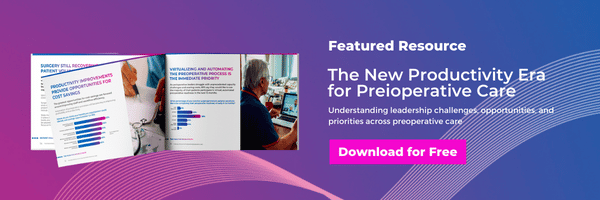The CMS and The Joint Commission updated their health and physical assessment (H&P or focused assessment) requirements for surgery centers and hospitals, removing unnecessary, obsolete, or excessively burdensome activity. Since then, individual states have gone further and relaxed their rules, such as the California Public Health Department. These rules have been relaxed so that healthcare organizations can fast-track patients to clear their post-pandemic surgical backlogs, reducing the requirements for a 30-day H&P before a procedure, where not necessary, especially for low-risk patients.
Today, most are finding that their process is still high friction, costly, people-dependent, and that work is not evenly distributed, becoming either front-loaded or back-loaded, leading to stress on teams and delays to surgery.
But, here’s the breakthrough. One health system has found a better way. By automating repetitive and tedious tasks, they have been able to fast-track 67% of their patients, saving 28,000 hours of physician and RN time per year and reducing costs per case by 20%.
Orchestration technology to reduce friction and eliminate manual tasks
When they looked at their preoperative workflow and assessed opportunities to optimize it, bearing in mind new legislation, they identified many opportunities to reduce friction and eliminate manual interventions. The problem was that they had a unique process, and changes to the process were specific to them. They concluded they could not implement these changes without adding more people or changing how they worked. Their approach was stifling them instead of working for them. There had to be a better way!
They looked to their EHR system, which had some capabilities. But, although at first glance it seemed promising, this functionality was largely passive reports and checklists, not configurable, could not escalate patient issues to their team members, and did not handle patient exceptions.
Ultimately, they chose a completely new route to achieve the benefits above. This route was to work with a partner who brought both deep expertise in clinical process best practices and orchestration technology to automate a new dynamic, lean process.
This is how a large IDN implemented Care Orchestration in four steps:
1. Design a new future state that streamlines their process and reduces the burden on staff
2. Make the process dynamic to fast-track the majority of patients while adapting to the unique needs of every individual
3. Implement technology to automate and eliminate routine tasks while escalating for human intervention only when required
4. Apply closed-loop learning to measure success and improve
Contact Lumeon to learn more about how your organization can streamline its preoperative process and reduce friction and cost.


